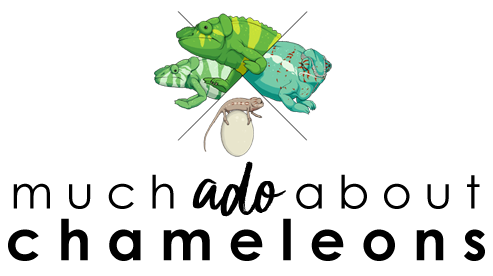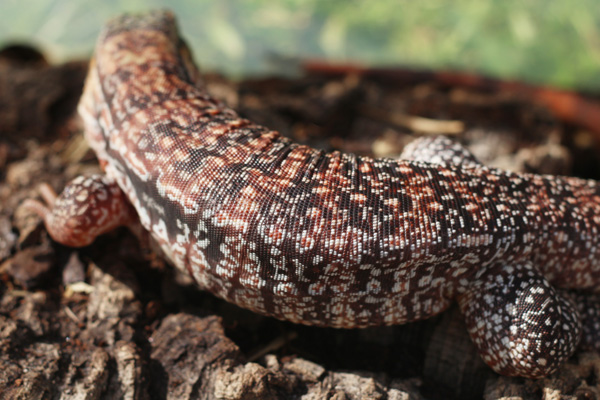Caution: This post contains graphic necropsy photos.
Unfortunately, this week’s post is not a happy one but it’s
a necessary one, nonetheless. I’ve never talked very much about parasites
beyond just recommending routine fecal tests but I’m going to dedicate this
post to talking about what it looks like when parasites take over and end up
killing their host. Next week I’ll follow up and talk more about common
parasites, how to manage them, and how to (hopefully) avoid this situation.
Not quite a month ago, on Tuesday, December 13th,
I received a new little panther chameleon. To the best of anyone’s knowledge he
was a captive-born from the previous July (making him 6-months-old), and in
great shape. We had a very pleasant buying and shipping experience and I had no
complaints about Fox, the Ambilobe panther chameleon. In the few weeks that followed he did very well; he would
eat and drink normally and nothing in his behavior seemed out of order. He
started warming up to his new home and you could start to see his little
personality shining through. On a couple occasions I was able to take him
outside for some Miami sunshine.
 |
| Fox, shortly after coming to live with me. Picture of health. |
On Wednesday, January 4th I came home from work
and went to check on the reptiles as I always do after feeding the dog his
dinner. Fox’s eyes were sunken, which
struck me as unusual given how white his urates were, but I gave him a
20-minute shower and after drinking heavily he perked up. I could tell
something was off, however. The following day I came home after work and he
looked considerably worse; his colors were pale and his eyes were even more
sunken than the previous day, and I found him lethargically sitting on a branch
with his eyes closed.
This is an animal that is crashing, I thought. I
moved him into a hospital cage where I administered some fluids, but by now I
knew he wouldn’t make it through the weekend, and that there was nothing we
could do to turn him around. Sure enough, he passed away late on Friday the 6th.
Before he died, however, I noticed for the first time clearly distinct shapes
just beneath his skin. Worms!
 |
| The beginning of the decline. |
Caution: Graphic necropsy photos begin after this point.
I dusted off my dissection kit and immediately set to work
once I was sure he had passed away. I started by very gently removing the skin
from the rib cage on his left side, where the worms seemed quite obvious. As
soon as I peeled back the skin I was greeted by half a dozen large off-white
worms, which quickly slithered into recesses away from the open. As I kept
peeling I could see a pocket of worms collected near his pelvis, towards the
back of his abdomen. I realized he wasn’t as well-fed as I originally though,
he was just full of subcutaneous worms. Pretty gross, even for me!
Next I removed the entire side of his rib cage. Inside were even
more worms, under and around all his organs. There was one on his lung,
encrusted in the lining, and his stomach was completely bloated. I barely
touched the stomach with my scalpel and it burst open with worms.
It was a similar story throughout the rest of him. I stopped
once I saw the extent of the infestation (I didn’t think exploring further was
necessary, as I had my cause of death). I easily pulled out a couple hundred of
these worms and still had plenty left I could have removed. It’s clear to me
that he had a particularly heavy infestation and that the stress of moving into
my home must have tipped the scales against him. Whatever balance the parasites
had with their host that allowed him to develop relatively normally otherwise
was broken and they caused his death.
 |
| Minutes before he died. You can see the worms under his skin. |
These are the questions I have still, and which I am still
investigating:
1. According to one veterinarian that was able to look at my photos, they seem to be Foleyella furcata, which most of us know as subcutaneous filaria, which usually only affect wild-caught chameleons. So how did they end up in an alleged captive-born chameleon?
2. Is there any way these worms could have spread here in Florida somehow? In Madagascar they depend on a special species of mosquito to act as a vector, so we should be safe here in the US from chameleon-to-chameleon infection. But if this is so, and assuming this panther was indeed captive-born, how else do we explain it?
3. Could it have been avoided by deworming early? How early
should we start treating chameleons with dewormers to avoid something like
this?
loading..

























Really gross but interesting and horrifying to see the extent of the infection, poor little guy :( I really look forward to your future post about parasites and prevention and such.
ReplyDeletePoor little guy! That's so sad. Thanks for the advice.
ReplyDeleteThank you so much for this blog. I have gotten bitten by the chameleon bug several years ago. I agree, whole heartedly, that they are geniuses in hiding their maladies until its too late. Much to my heart-broken chagrin. One day their dancing for their girls, next day they are hanging off their branches. This one is very informative, because it shows with even the most educated of care givers, these awful things still happen. If only they could talk. Genevieve
ReplyDeleteGreat topic,Thanks for sharing this blog.
ReplyDeletegclub
goldenslot
gclub online